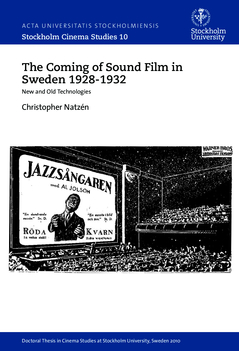This dissertation examines the coming of sound film in Sweden during the years 1928–1932, and the reception of mechanically recorded sounds both in the trade press and among audiences. The novelty of sound film opened up for a negotiation of the perception of sound and image, as it made visible the film medium’s technological construction, before this visibility was once more absorbed by the cinematic discourse. The conversion to sound film is considered from three perspectives -- technology, reception and practice -- as well as through the concept of intermediality, focussing how the audio-visual expression changed during this period.


